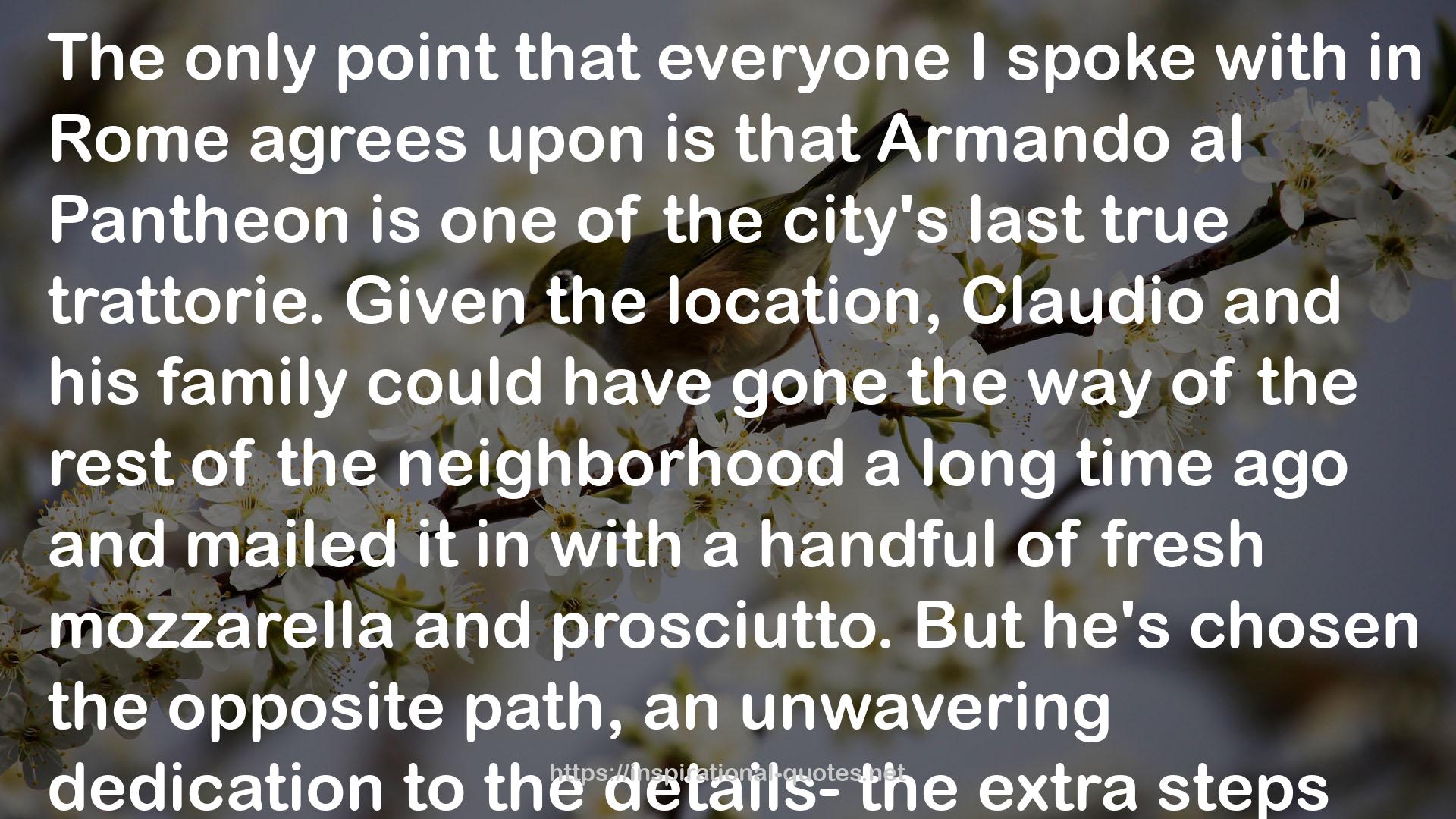" The only point that everyone I spoke with in Rome agrees upon is that Armando al Pantheon is one of the city's last true trattorie.
Given the location, Claudio and his family could have gone the way of the rest of the neighborhood a long time ago and mailed it in with a handful of fresh mozzarella and prosciutto. But he's chosen the opposite path, an unwavering dedication to the details- the extra steps that make the oxtail more succulent, the pasta more perfectly toothsome, the artichokes and favas and squash blossoms more poetic in their expression of the Roman seasons.
"I experiment in my own small ways. I want to make something new, but I also want my guests to think of their mothers and grandmothers. I want them to taste their infancy, to taste their memories. Like that great scene in Ratatouille."
I didn't grow up on amatriciana and offal, but when I eat them here, they taste like a memory I never knew I had. I keep coming back. For the cacio e pepe, which sings that salty-spicy duet with unrivaled clarity, thanks to the depth charge of toasted Malaysian peppercorns Claudio employs. For his coda alla vaccinara, as Roman as the Colosseum, a masterpiece of quinto quarto cookery: the oxtail cooked to the point of collapse, bathed in a tomato sauce with a gentle green undertow of celery, one of Rome's unsung heroes. For the vegetables: one day a crostini of stewed favas and pork cheek, the next a tumble of bitter puntarelle greens bound in a bracing anchovy vinaigrette. And always the artichokes. If Roman artichokes are drugs, Claudio's are pure poppy, a vegetable so deeply addictive that I find myself thinking about it at the most inappropriate times. Whether fried into a crisp, juicy flower or braised into tender, melting submission, it makes you wonder what the rest of the world is doing with their thistles. "
Image for Quotes
 Ratatouille."
Ratatouille."I didn't grow up on amatriciana and offal, but when I eat them here, they taste like a memory I never knew I had. I keep coming back. For the cacio e pepe, which sings that salty-spicy duet with unrivaled clarity, thanks to the depth charge of toasted Malaysian peppercorns Claudio employs. For his coda alla vaccinara, as Roman as the Colosseum, a masterpiece of quinto quarto cookery: the oxtail cooked to the point of collapse, bathed in a tomato sauce with a gentle green undertow of celery, one of Rome's unsung heroes. For the vegetables: one day a crostini of stewed favas and pork cheek, the next a tumble of bitter puntarelle greens bound in a bracing anchovy vinaigrette. And always the artichokes. If Roman artichokes are drugs, Claudio's are pure poppy, a vegetable so deeply addictive that I find myself thinking about it at the most inappropriate times. Whether fried into a crisp, juicy flower or braised into tender, melting submission, it makes you wonder what the rest of the world is doing with their thistles." style="width:100%;margin:20px 0;"/>